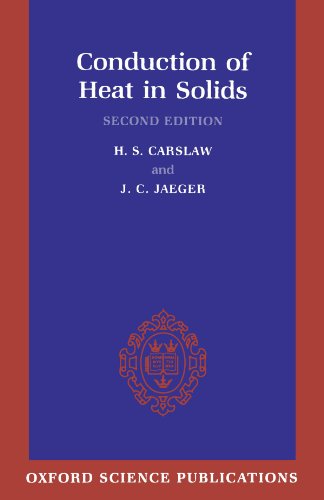Conduction of Heat in Solids by H. S. Carslaw, J. C. Jaeger


Conduction of Heat in Solids download
Conduction of Heat in Solids H. S. Carslaw, J. C. Jaeger ebook
Publisher: Oxford University Press, USA
Page: 517
Format: djvu
ISBN: 0198533683, 9780198533689
The greatest flow of heat possible between materials is where there is a direct conduction between solids. Posted 10 February 2013 - 05:39 AM. The atomic picture also will help explain why conduction is more critical in solids: in solids the atoms are close jointly and unable to move round. Hello, I wonder how to achieve the successful heat transfer (conduction) betweeen two solid domains (aluminum and steel). When the heat transfer involves solids then we call it conduction. There is a simple solution, but first let's learn a little about heat conduction: 1. Heat Conduction: Lumped System Analysis – Heat Transfer in Semi infinite and infinite solids – Use of Transient – Temperature charts – Application of numerical techniques. In the meantime you can do two things: - search in the forum. - google "conduction of heat in solids calculation excel". Gases, such as air, do not conduct heat very well. This heat transfer can take place in three different modes viz. Heat conduction, Heat convection and Thermal Radiation. The heat convection can occurs due to bulk motion of fluid and in contact with solid surface. An example of conduction through contact between two solids is a cooking pot on the solid surface of a hot stove. For conduction to work there needs to be physical contact between the two systems in question. Let's talk about heat – solids, liquids, and gases are made up of molecules. Conduction Heat transfer always takes place by areas of high heat energy migrating to areas of. Conduction is heat transfer from warm to cooler areas within a material, or between two materials touching each other. UNIT II CONVECTIVE HEAT TRANSFER 10. Conduction is the phenomenon of transfer of heat through one part of the body to another, from particle to particle in the direction of fall of temperature without any actual movement of the particles. Because molecules are farther apart in gases than in solids, the gases are much poorer conductors of heat.
Schaum's outline of theory and problems of tensor calculus epub
